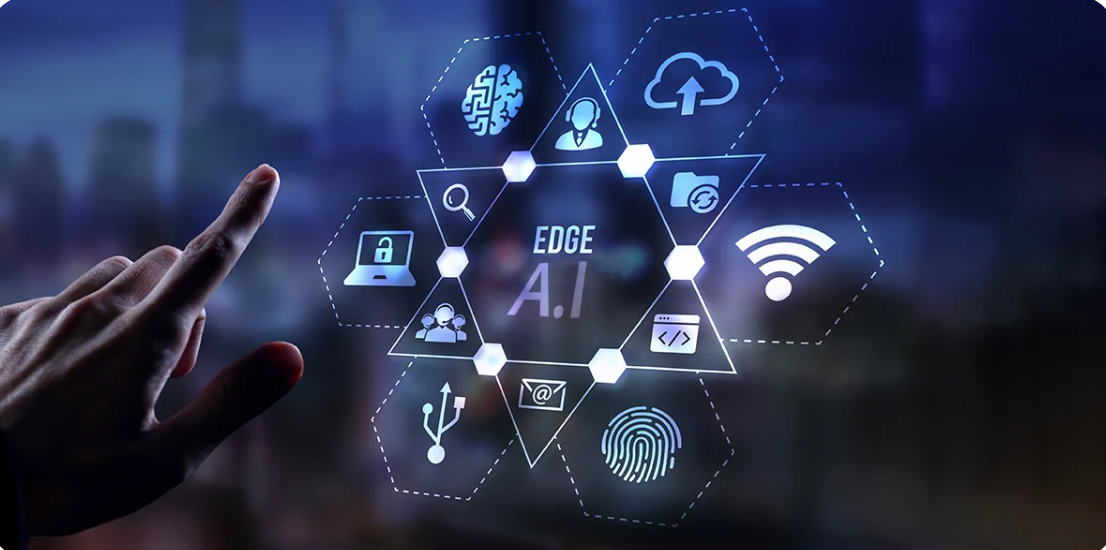
22 Aug 2025
Edge AI in Data Science: Real-Time IoT Analytics Use Cases
Edge AI in IoT is revolutionizing data science with real-time analytics. From predictive maintenance in manufacturing to healthcare wearables and smart cities, discover powerful use cases driving innovation. This shift is making industries faster, smarter, and more connected than ever.
In today’s hyper-connected world, data is being generated at the edge—from sensors, cameras, wearables, industrial equipment, and smart devices. Traditional cloud-based analytics struggles with the sheer volume, speed, and latency demands of Internet of Things (IoT) data. This is where Edge AI comes into play.
By combining Artificial Intelligence (AI) with edge computing, organizations can process and analyze data locally, right where it’s generated, instead of sending everything to distant cloud servers. This enables real-time decision-making, reduced bandwidth costs, and improved security.
In this blog, we’ll explore how Edge AI is transforming IoT analytics, along with practical use cases across industries.
🔹 What is Edge AI?
Edge AI refers to deploying machine learning models directly on edge devices (such as gateways, sensors, and mobile devices). Instead of relying on centralized data centers, these devices run AI algorithms locally, allowing for faster insights and actions.
Key advantages include:
Low latency: Real-time responses without cloud delays.
Enhanced privacy: Sensitive data stays on the device.
Cost efficiency: Reduced need for continuous cloud uploads.
Scalability: Handles massive IoT data without overloading networks.
🔹Real-Time IoT Analytics Use Cases of EdgeAI
1. Smart Manufacturing (Industry 4.0)
Factories are equipped with sensors monitoring temperature, vibration, and machine performance. Edge AI models detect anomalies, predict equipment failures, and trigger alerts before breakdowns occur.
👉 Outcome: Reduced downtime, optimized maintenance, and improved productivity.
2. Healthcare Wearables
Wearables like smartwatches and fitness trackers use Edge AI to analyze heart rate, oxygen levels, and movement patterns in real time. Critical alerts can be generated instantly without waiting for cloud processing.
👉 Outcome: Faster medical response and improved patient monitoring.
3. Autonomous Vehicles & Transportation
Self-driving cars rely on cameras, LIDAR, and radar sensors to make split-second decisions. Edge AI ensures decisions (like braking or lane switching) happen instantly, without waiting for cloud communication.
👉 Outcome: Increased safety and real-time navigation.
4. Retail & Smart Stores
AI-enabled cameras at the edge can detect customer behavior, manage shelf inventory, and prevent theft. Retailers gain instant insights without relying solely on cloud processing.
👉_ Outcome_: Personalized shopping experience and reduced losses.
5. Smart Cities & Utilities
From traffic lights to energy grids, Edge AI helps manage urban infrastructure in real time. For example, smart traffic systems can reduce congestion by analyzing vehicle flow at the edge.
👉 Outcome: Efficient resource usage and better quality of life for citizens.
6. Agriculture & Farming
Edge-enabled drones and IoT sensors monitor soil conditions, crop health, and irrigation. AI models can instantly detect disease or drought stress and guide farmers in real time.
👉 Outcome: Higher yields, lower costs, and sustainable farming.
🔹 The Future of Edge AI in IoT Analytics
With 5G adoption, tiny ML models, and advancements in edge hardware, Edge AI is set to become a cornerstone of data science in IoT ecosystems. Businesses adopting edge-based analytics will be able to unlock faster insights, cost savings, and competitive advantages.
🔹 Final Thoughts
Edge AI is revolutionizing how organizations analyze and act on IoT data. From healthcare to smart cities, the ability to run AI at the edge empowers industries to move from reactive to proactive decision-making.
If you’re exploring how Edge AI and IoT analytics can enhance your business or research, now is the time to dive in. Enroll Now At Cokonet Academy
Visit: https://www.cokonet.com

